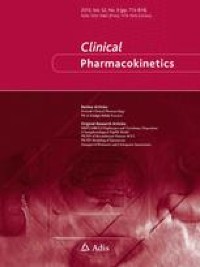Abstract
Antibiotic therapy is one of the main treatments for cystic fibrosis (CF). It aims to eradicate bacteria during early infection, calms down the inflammatory process, and leads to symptom resolution of pulmonary exacerbations. CF can modify both the pharmacokinetic (PK) and pharmacodynamic (PD) profiles of antibiotics, therefore specific PK/PD endpoints should be determined in the context of CF. Currently available data suggest that optimal PK/PD targets cannot be attained in sputum with intravenous aminoglycosides. Continuous infusion appears preferable for β-lactam antibiotics, but optimal concentrations in sputum are unlikely to be reached, with some possible exceptions such as meropenem and ceftolozane. Usual doses are likely suboptimal for fluoroquinolones and linezolid, whereas daily doses of 45–60 mg/kg and 200 mg could be convenient for vancomycin and doxycycline, respectively. Weekly azithromycin doses of 22–30 mg/kg could also be appr opriate for its anti-inflammatory effect. The difficulty with achieving optimal concentrations supports the use of combined treatments and the inhaled administration route, as very high local concentrations, concomitantly with low systemic exposure, can be obtained with the inhaled route for aminoglycosides, colistin, and fluoroquinolones, thus minimizing the risk of toxicity.



Δεν υπάρχουν σχόλια:
Δημοσίευση σχολίου